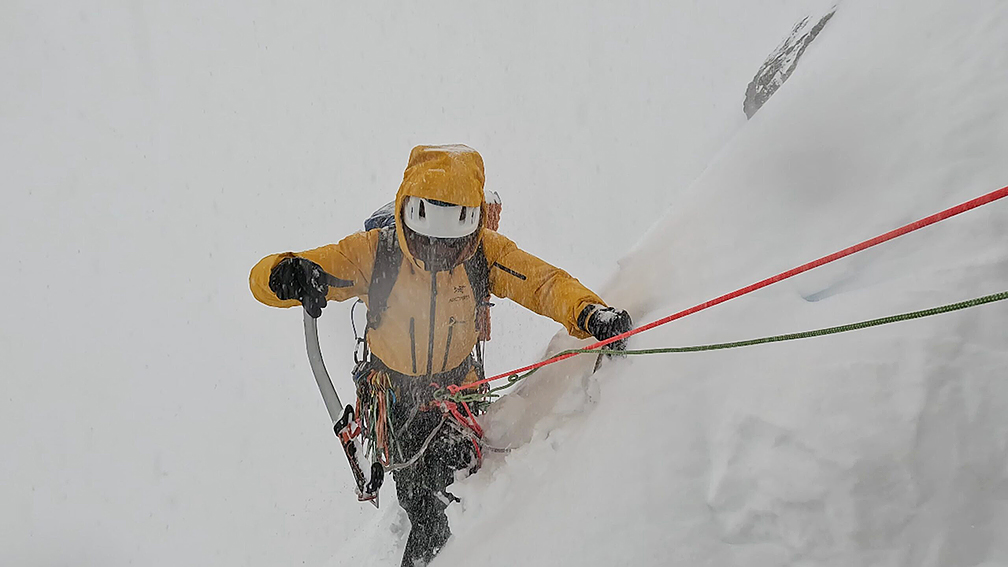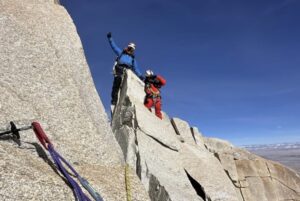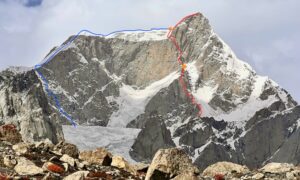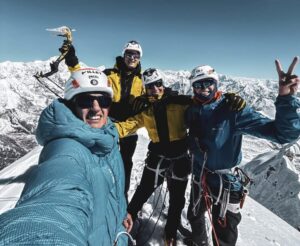Some of the highest unclimbed peaks lie in remote or restricted areas inaccessible to international expeditions — but not to local ones. Xia Zhongming of China has shared a complete report on the first ascent of Karjiang, a 7,221m peak on the border of Tibet and Bhutan.
Karjiang is part of the Khula-Kangri massif and comprises several peaks: the south peak (7,221m); central Karjiang II (7,018m); the northwest peak Karjiang III, also called Taptol Kangri (6,824m); and Kangmi Kangri (6,412m on the northeast spur). Karjiang was the fourth-highest unclimbed peak in the world, until this past August.
Japanese climbers failed to reach the main summit in the 1980s but summited Karjang II instead. In 2001, a Dutch expedition aborted their attempt on the main summit because of slab avalanches but did first ascents of Karjiang III and Kangmi Kangri.
College holidays
The unclimbed main summit has been in the mind of Chinese climber Liu Yang for years. Previous expeditions all tried during the post-monsoon, but Liu Yang could only climb in July and August, during his holidays as a university lecturer.
On July 15, he left Lhasa with climbing partner Song Yuancheng, a photographer, and two base camp staff. From there, they traveled to Lhozhang county, the starting point of the hike to the mountain. They set up base camp on a moraine at 5,800m on July 24.
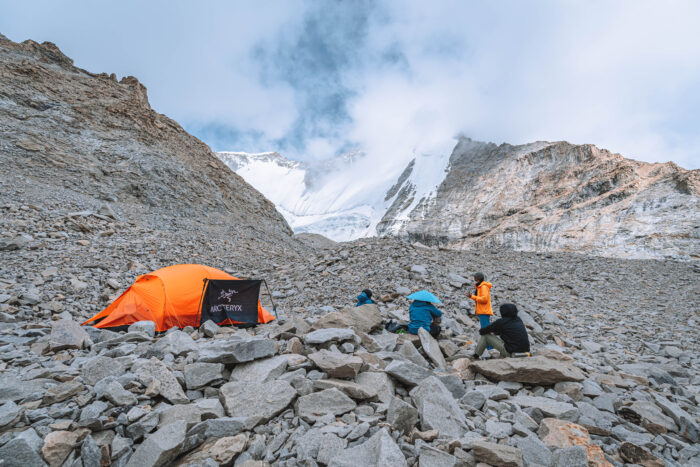
The mountains are not as isolated from roads and villages as some other massifs, and the climbers were able to return to Lhasa twice between forays up and down the peak. Photo: Liu Yang
First failed attempt
The climbers tried a first reconnaissance trip, but clouds blanketed the mountain. Back in base camp, they found two staff members ill with AMS, so the entire team retreated to Lhasa for a couple of days.
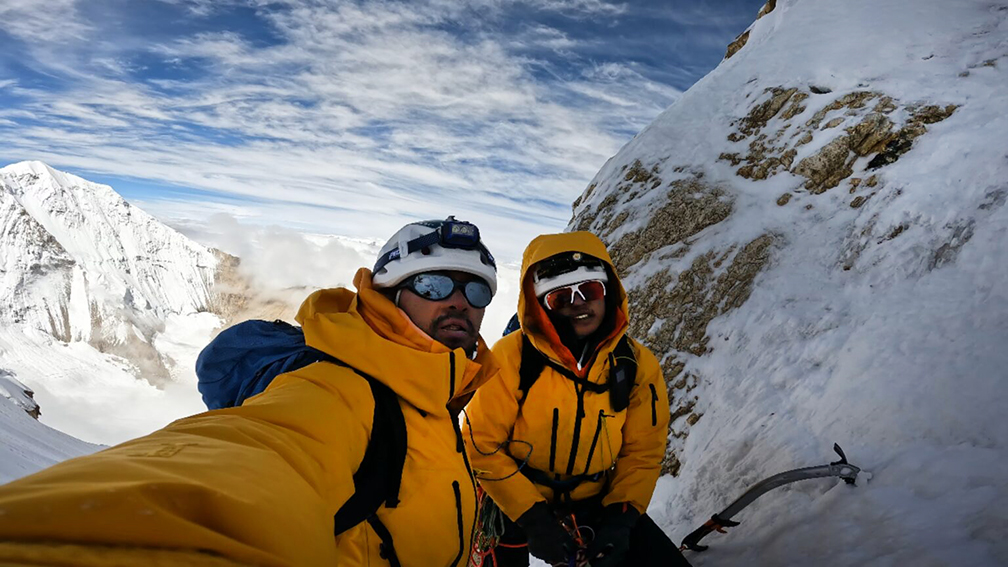
On Karjiang. Photo: Liu Yang
They returned to base camp on July 30, with a forecast announcing two days of good weather. They set off the following morning. Although it was still snowing, they crossed the glacier and continued up a snowfield until they dug a first bivouac under a serac at 6,350m.
The pair gained a further 300 vertical meters on the following day, but then a meter of snow fell during the night. That slowed down progress too much. After a third night at 6,900m, they retreated back to base camp and then again to Lhasa.
At least, their acclimatization was now complete. They knew the route well enough to feel confident that all they needed was three days of good weather to climb the route. But would such a window open before they had to head home on August 15?
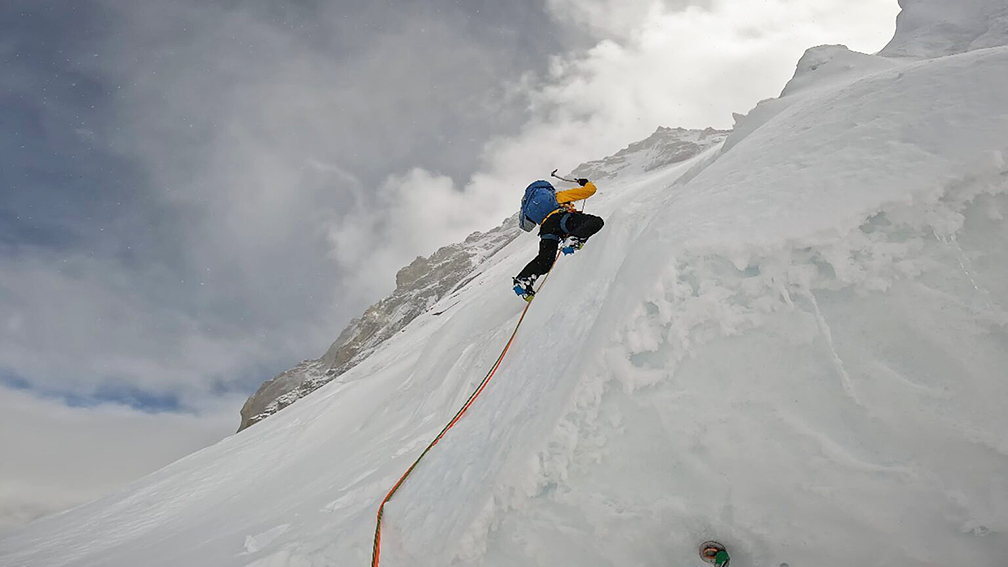
On a section of steep ice. Photo: Liu Yang
Last-minute push
Eventually, almost out of time, they risked a last-minute attempt with a forecast of moderate snowfall. They set off on August 11 at 2:30 am and followed a route adjacent to the one they had chosen on the previous attempt. The section below 7,000m was ice and snow, while above, it was mixed terrain. Half the lower section was a straightforward but icy face, and the rest was deep snow, the climbers said.
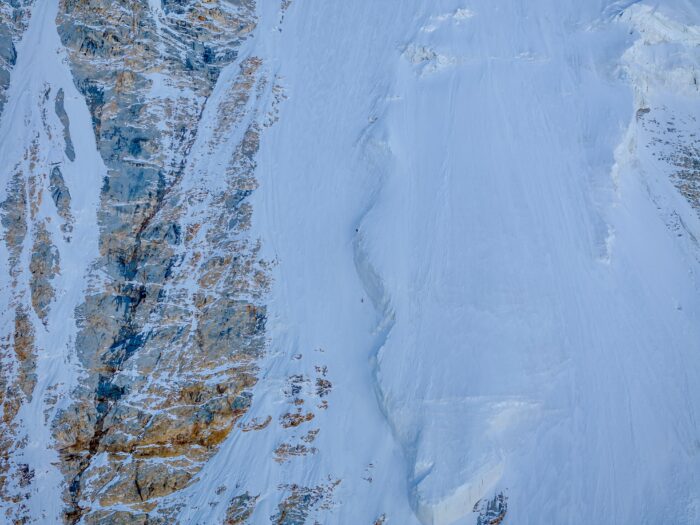
The icy face from base camp. Photo: Chinese expedition team
They simul-climbed up to 6,550m and didn’t stop until 6 pm, when they found an ice cave to bivy in. After digging for two hours, the place was still too narrow for the tent, so they slept in their sleeping bags. At 5 am, the snowstorm stopped.
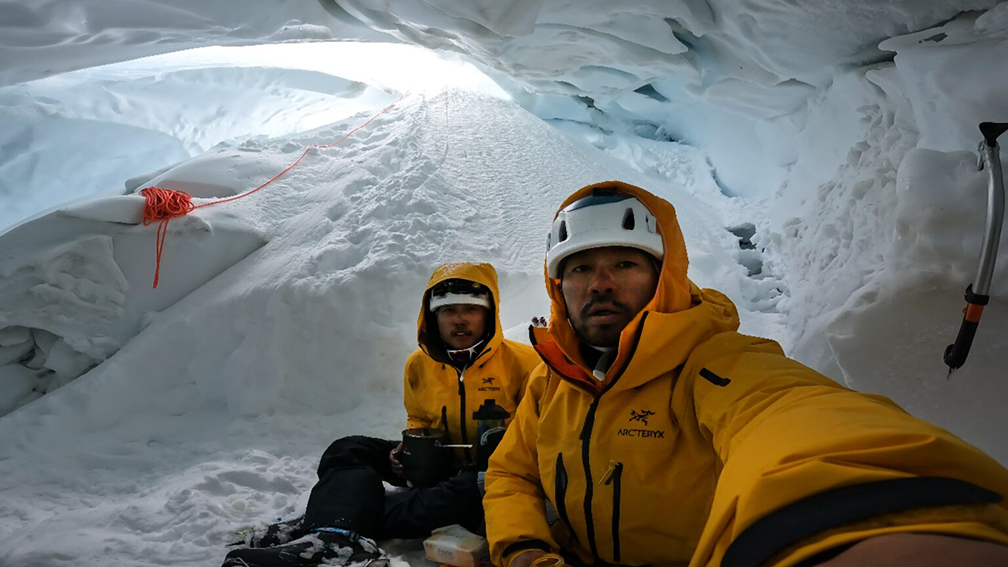
In the ice cave. Photo: Liu Yang
The long following day, the climbers’ hands were cold due to wet gloves, and a tent pole snapped in the low temperatures. So on their next bivouac, they slept in a crevasse.
On August 13, they left their gear at the crevasse and went for the summit. They gained 100 vertical meters on loose mixed terrain with unreliable protection. At 2 pm, they reached the snowy summit ridge and headed for the highest point, where they finally stood at 2:55 pm.
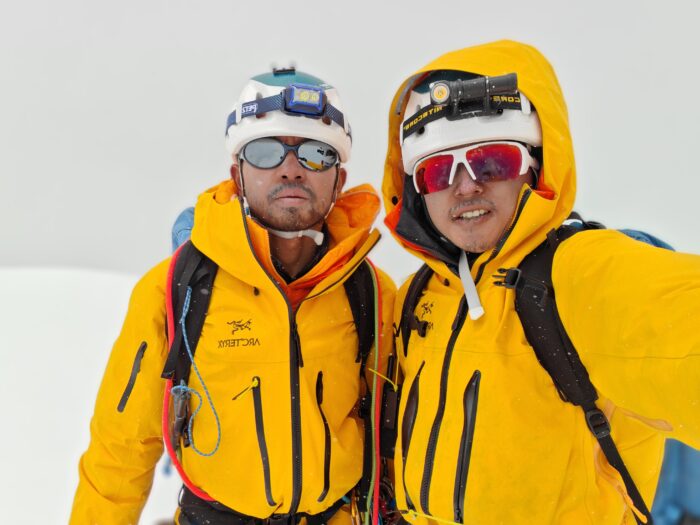
On the summit. Photo: Liu Yang
Descent in a whiteout
They rappelled and downclimbed back to the last bivy site, which they reached in heavy snowfall and total whiteout. The following day featured some tense moments as the climbers, disoriented in the blizzard, descended on avalanche-prone terrain.
Luckily, they safely reached the glacier on August 14. But the day was far from over. On reaching base camp, they found their tent flattened under fresh snow, so they continued down to the nearest village. The climbers made it back to Lhasa on the last day of their holidays. They thereby called their new route Buzzer Beater and proposed a grade of AI3 snow 70° M4+ 1,300m.

The new route by Liu Yang and Song Yuancheng. Photo: Chinese expedition team
Xia Zhongming of Germany kindly provided the information in this story after discussing the details with Liu Yang. Xia told us that a young Chinese team has since repeated the new route.
